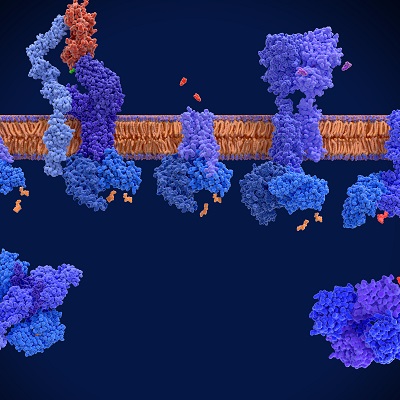December 5, 2022 -- Chemically linking fentanyl to the sodium pockets that exist within nerve cell receptors could block the drug's harmful side effects and still reduce pain, according to a new study.
Fentanyl, a synthetic opioid, is responsible for tens of thousands of deaths each year, but a team from the University of Southern California, Washington University, and Stanford University have demonstrated the drug could be redesigned (Nature, November 30, 2022).
The research team targeted the G-protein coupled receptors (GCPRs) because they act as signal transmitters that mediate a drug's intended effect on the brain and body. Using cryogenic electron microscopy (Cryo-EM), they studied structures of the most potent bitopic ligands in complex with mu opioid receptor (µOR) agonists like fentanyl and found key interactions between the ligand's guanidine and the key Asp2.50 residue in the Na+ site.
The lead bitopics maintain nanomolar potency and high efficacy at Gi subtypes and they show strongly reduced arrestin recruitment. However, one also showed the lowest Gz-efficacy among the panel of µOR agonists, including partial and biased, morphinan and fentanyl analogs, the researchers found.
In mice, the best bitopic ligand displayed µOR dependent antinociception with attenuated adverse effects, which supports the idea of sodium pockets as a potential target for the design of safer analgesics.
More studies are needed to prove the less harmful version of fentanyl will work in humans, but the results offer an avenue for potentially improving the safety of painkillers, the scientists said.
Copyright © 2022 scienceboard.net











